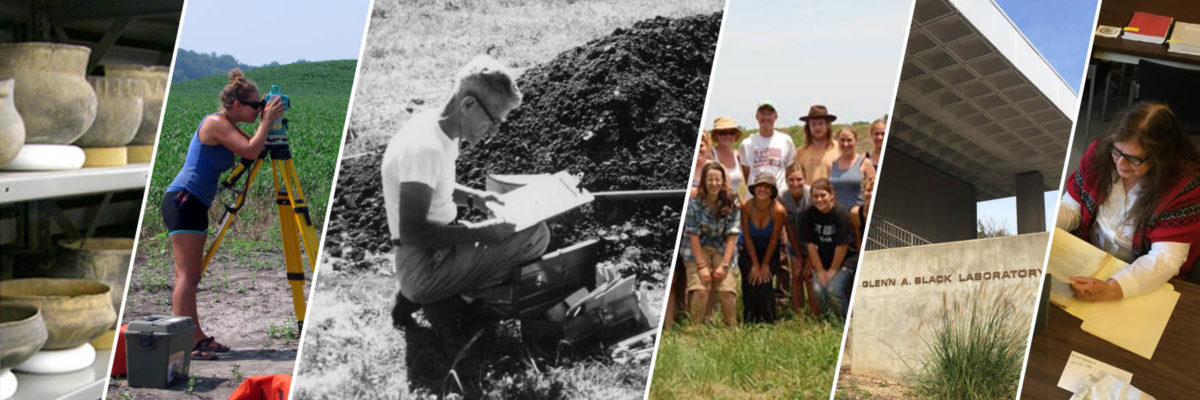by Eric Carlucci
The second half of the Wylie House project in the Fall semester of 2018 was focused on analysis of the ceramic materials. Along with students from an Archaeological Lab Methods course occurring at the same time, ceramics would be analyzed and discussed. To prepare, I was tasked with organizing ceramics into like categories (such as unglazed earthenware, porcelain, and many more), then labeling each piece with the Glenn Black account number, category number, and subcategory number. In order to do this, we applied a thin layer of a quick-drying agent called B72 to a part of the artifact, and then would write over this once it had dried with the lab’s account number, the category number, and subcategory number on each sherd.
The account number reflected the number which will be used to file all Wylie House June 2018 artifacts; the category number reflects the artifact type within the field specimen (or level) bag; and the subcategory number reflects the more specific type of artifacts, such as porcelain or unglazed earthenware. This was a long, drawn-out task of labeling hundreds of sherds, and took place over a number of weeks. At this same time, I was preparing for my qualifying exams to pass through into Ph.D. candidacy. Taking some weeks off to focus on that made the task more urgent to complete in a very short period of time. Thankfully, the hard work paid off, and the ceramic sherds were all completed for the students in time.
Once the students were in their groups, they each focused on a different category. I helped the students where I could, discussing the ceramics or clarifying the object categorization. The students looked through both the sherds and related books and articles to help formulate a good overview of the types of ceramics present at the excavation and the site. They were to create a final project presentation based on their research to present during finals week. At the same time the students were performing their research, I began the process of labeling the next major material category: glass. This aspect of the project continued into the Spring semester, as there was far more glass than even ceramics! The labeling and categorizing of the glass was a similar process as the ceramics. Returning to the student analysis, the end of the semester went well, and the projects proved to be well thought out.

